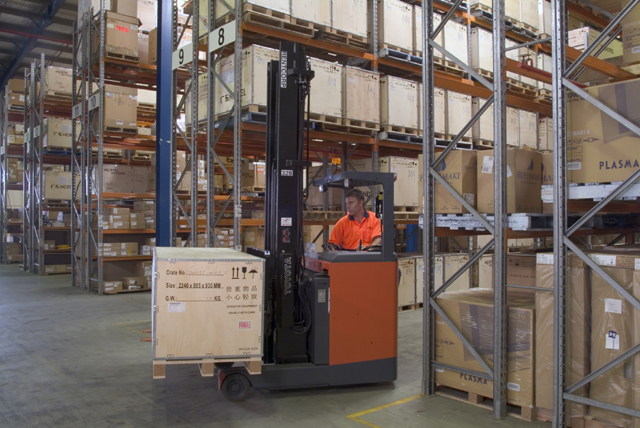 Forklift users are reminded of the inherent dangers of using a forklift. |
WorkCover New South Wales has issued a safety alert to remind forklift users of the inherent dangers of using a forklift.
The organisation recently responded to two incidents, both involving a worker being injured while a load was being shifted with a forklift.
In the first incident, a worker received crush injuries when chains used to suspend the load slipped off the tines, causing the load to fall. In the second incident, a heavy concrete pit toppled onto a worker while being placed onto a rack with a forklift.
In both incidents, the procedures for lifting, transporting and lowering the load did not ensure the stability of the load at all times. Also, other workers near the forklift were not safely positioned.
Employers and workers who operate forklifts should note the following:
* Employers must ensure that plant is safe when properly used. They also must develop and implement safe systems of work and ensure that employees are provided with the information, instruction, training and supervision that is required to ensure their health and safety at work.
* Forklift operators must be trained and hold a relevant license. They also must be competent at operating the forklift in the environments in which they are required to work.
* Before lifting a load, the weight, size, shape and composition of a load should be considered, along with the terrain that the forklift will be travelling over. Loads must only be lifted, carried and stored in a manner that ensures stability at all times.
* When carrying loads, avoid sudden or heavy braking that could cause the load to slide forward.
* Employers must provide appropriate equipment to lift and transport loads, which for forklifts could mean using specially designed attachments when the tines alone are not suitable. However, attachments must only be used if such use is allowed by the manufacturer. Load rating for the combined use of the attachment with the forklift should be prominently displayed.
* Slip on attachments should be secured to prevent accidental disengagement from the supporting tines. Do not sling loads from tines, as there may be a risk of the sling sliding off the tines. If necessary (and allowed by the manufacturer), use a jib or other specifically designed attachment to carry underslung loads.
* Employers must implement controls to prevent forklifts colliding with pedestrians or other mobile plant. These could include traffic management plans, signage, proximity warning devices, 'no-go' and 'pedestrian only' areas, site layout, using safely positioned spotters and other similar measures.
* Forklifts have numerous blind spots, especially if the carried load obstructs forward view. Operators should ensure other persons are excluded from the area or, where this is not reasonably practicable, remain in view at all times. Workers in the vicinity of operating forklifts should position themselves to be visible by the driver and remain clear of the travel path.
For further information, visit
workcover.nsw.gov.au workcover.nsw.gov.au or phone 13 10 50